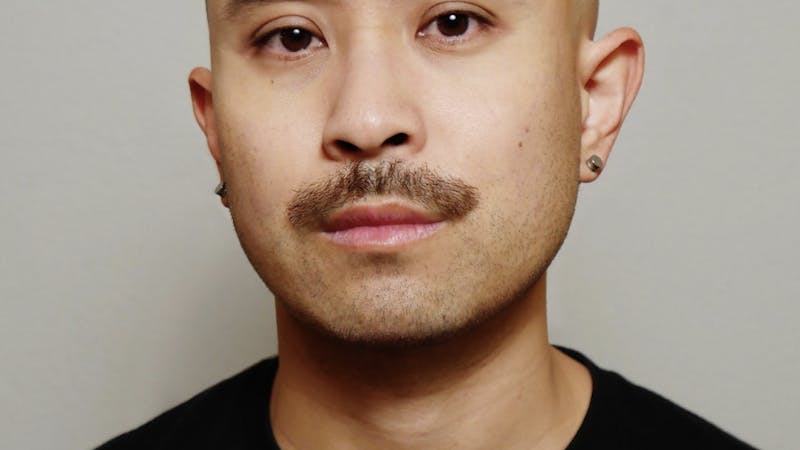Swishahouse hip-hop collection moves to Rice archives
Rice's archive collection recently got more swag. The Woodson Resource Center is now home to the Swishahouse Collection, which includes Paul Wall's platinum album, mix tapes, CDs, posters and more. According to Director of the Center for Engaged Research and Collaborative Learning Anthony Pinn, these materials moved into the Woodson Center over the summer and are now processed and ready for use.
"We decided several years ago that Rice was uniquely positioned to help Houston preserve its cultural memory," Pinn said. "That involved preserving physical materials that help make Houston what it is. Part of that had to involve the history of hip-hop."
Swishahouse, an independent record label, got its start in the mid-1990s as a mixtape business. According to Swishahouse Co-CEO G-Dash, DJ Michael Watts was leading a movement among artists on the north side of Houston at the time and began to create slowed-down mixes he called "swishamixes." From there, Swishahouse was born, and in 1999, the label released its first commercial record, The Day Hell Broke Loose. Today, Swishahouse continues to work on mixtapes but has also expanded to managing and consulting for major artists like Chamillionaire, Paul Wall, Mike Jones and Lil' Keke, G-Dash said.
G-Dash said Swishahouse aims to show the world a distinctly Texan lifestyle and kind of hip-hop.
"Music in Texas is different because our culture is different - the way we dress, the way we talk, the slang we use, the cars we drive," G-Dash said. "Texas just has its own unique style."
Pinn said he wanted to bring this hip-hop collection to Rice to expand the study of local culture.
"Rice is a tremendously significant tier one research university open to novel ways of thinking and interested in the creative production of knowledge," Pinn said. "Houston is a prime location in the history of hip-hop. It's a natural marriage between the two."
Pinn, a religious studies professor whose spring 2011 "Religion and Hip-Hop" course featured co-instructor Bun B, said he believes hip-hop has had a major impact on culture at the local, national and global levels.
"Hip-hop is one of the few cultural developments - beginning on the margins of U.S. society - in recent years with national and international reach that influences the aesthetics of life, our language, our perceptions of socioeconomic and political issues, and so on," Pinn said. "I think a cultural development with such profound reach should be a topic of intellectual examination. We should study it in order to get a sense of how several generations have envisioned their world."
Rice is not the only university in the United States to house a hip-hop collection - Harvard University has one as well - but Pinn said he believes Rice's collection is special.
"It seems to me that one of the things that is unique [about Rice's collection] is the volume of primary materials and the direct involvement of the hip-hop community," Pinn said.
In addition to focusing on the preservation of the materials, the Center will also provide programming to teach the Rice community about the collection, according to Pinn.
"We'll have a panel discussion this spring that will involve a documentary outlining the development of Swishahouse and then a panel discussion with the artists," Pinn said.
The Center for Engaged Research and Collaborative Learning is part of the Kinder Institute for Urban Research. According to Pinn, the Center's hip-hop collection goes hand-in-hand with the Kinder Houston Area Survey.
"The survey tells us about life in Houston," Pinn said. "This archival collection tells us about the material history."
Pinn said Rice's collection will not be limited to just hip-hop. The Center is currently in talks with other community leaders, such as the Rev. William Lawson, the founding pastor of Wheeler Avenue Baptist Church, to include other cultural materials as well.
G-Dash said he was honored when Pinn approached Swishahouse about housing its collection at Rice.
"It makes our legacy live on and gives people the opportunity to research us," G-Dash said. "For generations to come, people can look back and see how Swishahouse started."
G-Dash said he hopes aspiring artists go see the collection and feel inspired, just as he was by local artists during his childhood.
"Seeing artists so close to home let me know that it is possible," G-Dash said. "There's a man right in the city who's making it in this business."
Students interested in studying the materials can make an appointment with the Woodson Center or visit library.rice.edu/collections/WRC and search Swishahouse. For more information about Swishahouse, visit www.swishahouse.biz.
More from The Rice Thresher

Andrew Thomas Huang puts visuals and identity to song
Houston is welcoming the Grammy-nominated figure behind the music videos of Björk and FKA twigs on June 27.

Live it up this summer with these Houston shows
Staying in Houston this summer and wondering how to make the most of your time? Fortunately, you're in luck, there's no shortage of amazing shows and performances happening around the city. From live music to ballet and everything in between, here are some events coming up this month and next!

Review: 'Adults' couldn’t have matured better
Sitcoms are back, and they’re actually funny. FX’s “Adults” is an original comedy following a friend group navigating New York and what it means to be an “actual adult.” From ever-mounting medical bills to chaotic dinner parties, the group attempts to tackle this new stage of life together, only to be met with varying levels of success.

Please note All comments are eligible for publication by The Rice Thresher.